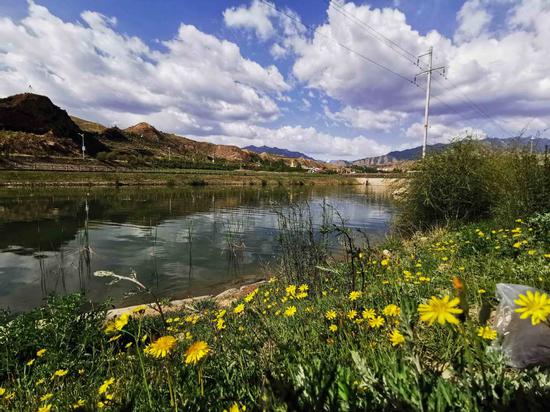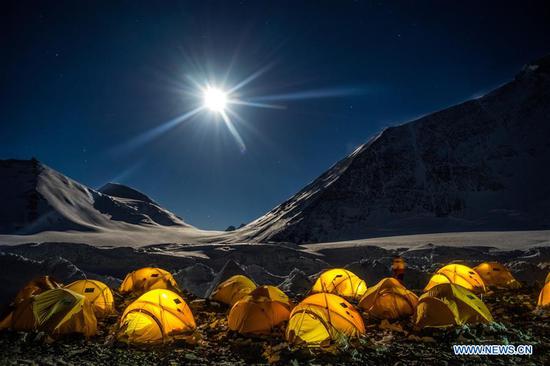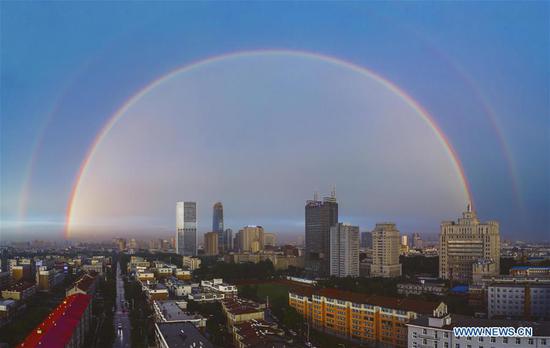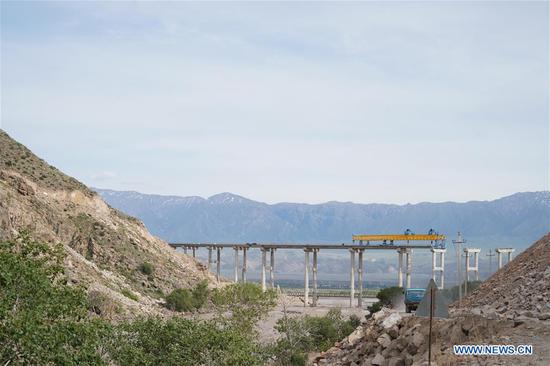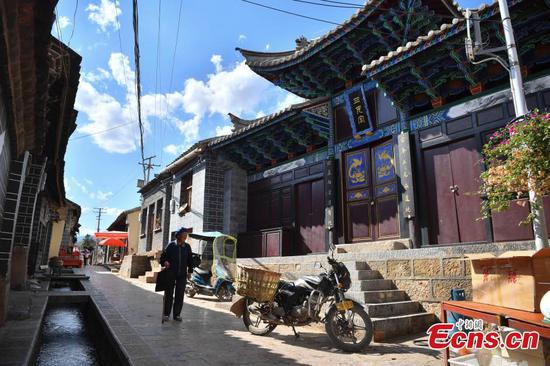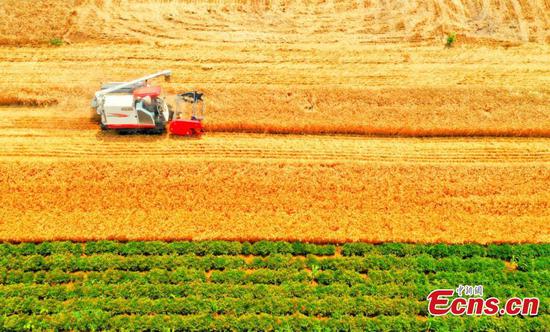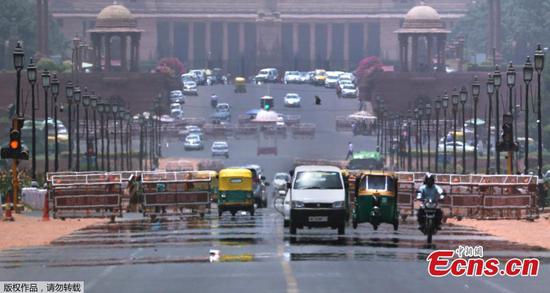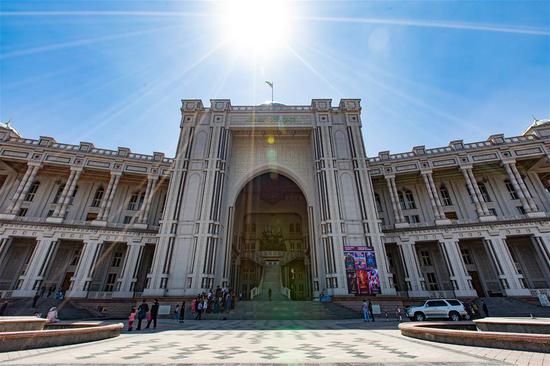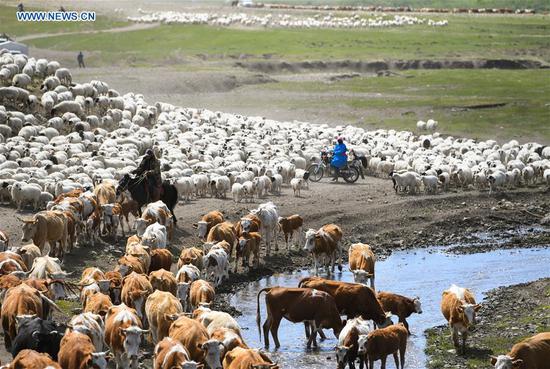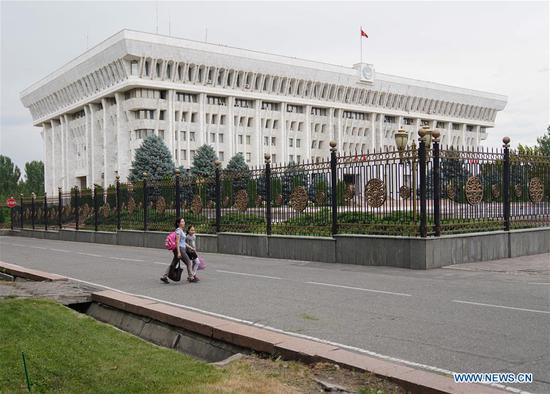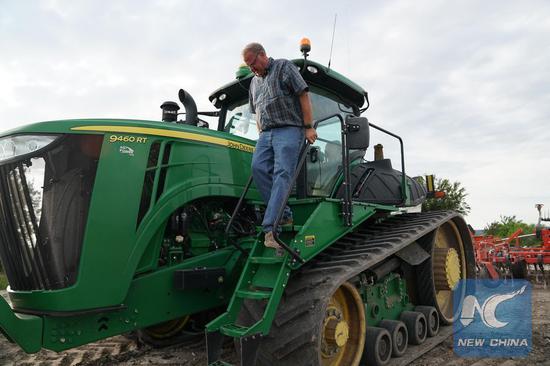
Tom Waters, a seventh-generation farmer, comes down from his tractor on his farmland in Orrick, Missouri, the United States, on June 9, 2019. (Xinhua/Liu Jie)
About 10 days after the latest round of rainfall, half of Tom Waters' farmland is still under water. "Some of it's flooded from the river. Some of it's flooded from seep water. Some of it just rain water that has nowhere else to go because it won't drain," said the seventh-generation farmer.
Waters and his family farm about 3,500 acres of land in Orrick, Missouri, a small town east of Kansas City. Among his nearly 1,700-acre rain-soaked fields, 900 acres were swallowed by the surging Missouri River when a levee broke on June 1 and are still up to 15 feet (4.5 meters) below water.
He had planted a few acres of corn, with the rest intended for soybeans, but "it's just gone now," Waters told Xinhua, estimating the loss to be "several hundred thousand dollars."
When the flood hit, Waters had to move out some 60,000 bushels of soybeans in storage, and sold them at "a pretty low price," about 3 dollars a bushel off the normal price prior to the U.S.-China trade tensions. "That's a lot of dollars difference for us," he said.
"This is just been rain after rain before it even dries out it rains again. It's been week after week after week like that," said Waters, who has been farming for over 40 years in this area, adding that the persistent wet weather is a "very rare event."
Noting that reservoirs up in Montana, North Dakota and South Dakota still have too much water to dump, the seasoned farmer worried that "the river is going to be high all the rest of spring and through summer, so chances are we won't get any of this (flooded land) planted this year."
Blake Hurst, president of the Missouri Farm Bureau, also a corn and soybean farmer in Tarkio, northwest Missouri, told Xinhua that he saw similarly catastrophic floods in this area in 1993, but such a widespread severe flooding throughout the Midwest is the worst he can remember.
"The last 12 months, in the center part of the United States, have been the wettest 12 months on record," said Hurst, who has about 500 acres of land under water, noting that the relentless rain since late March has contributed to significant planting delays.













